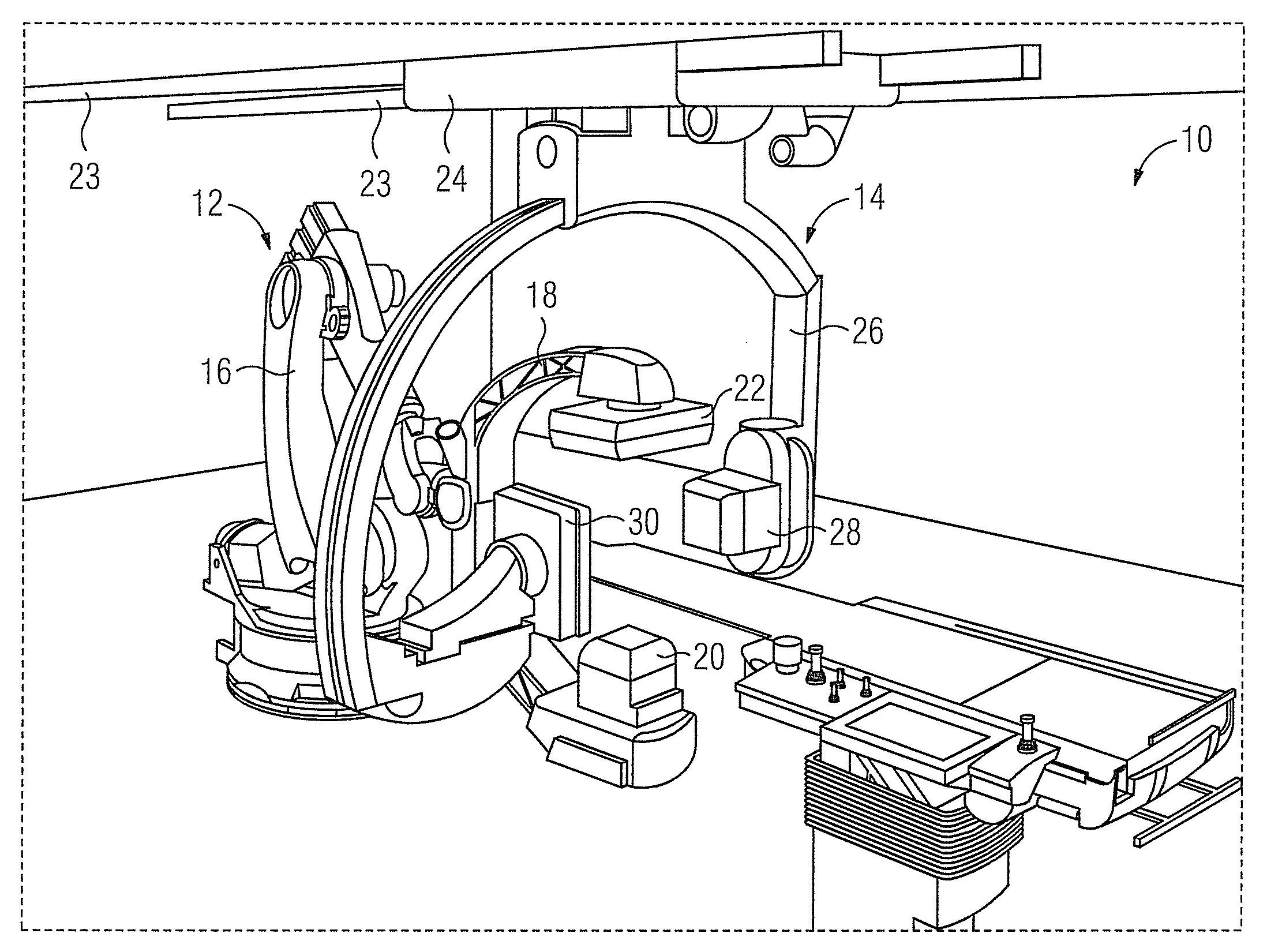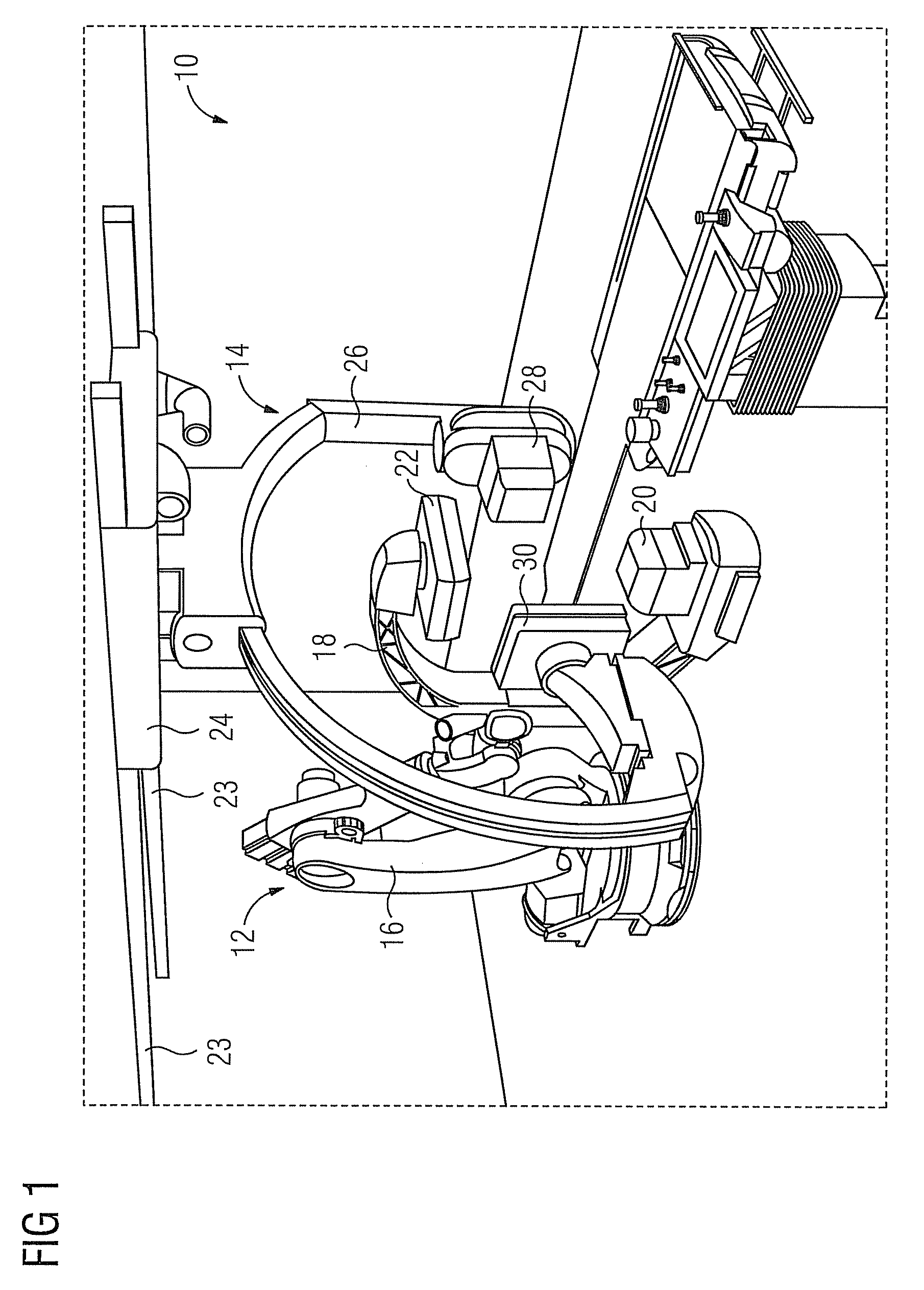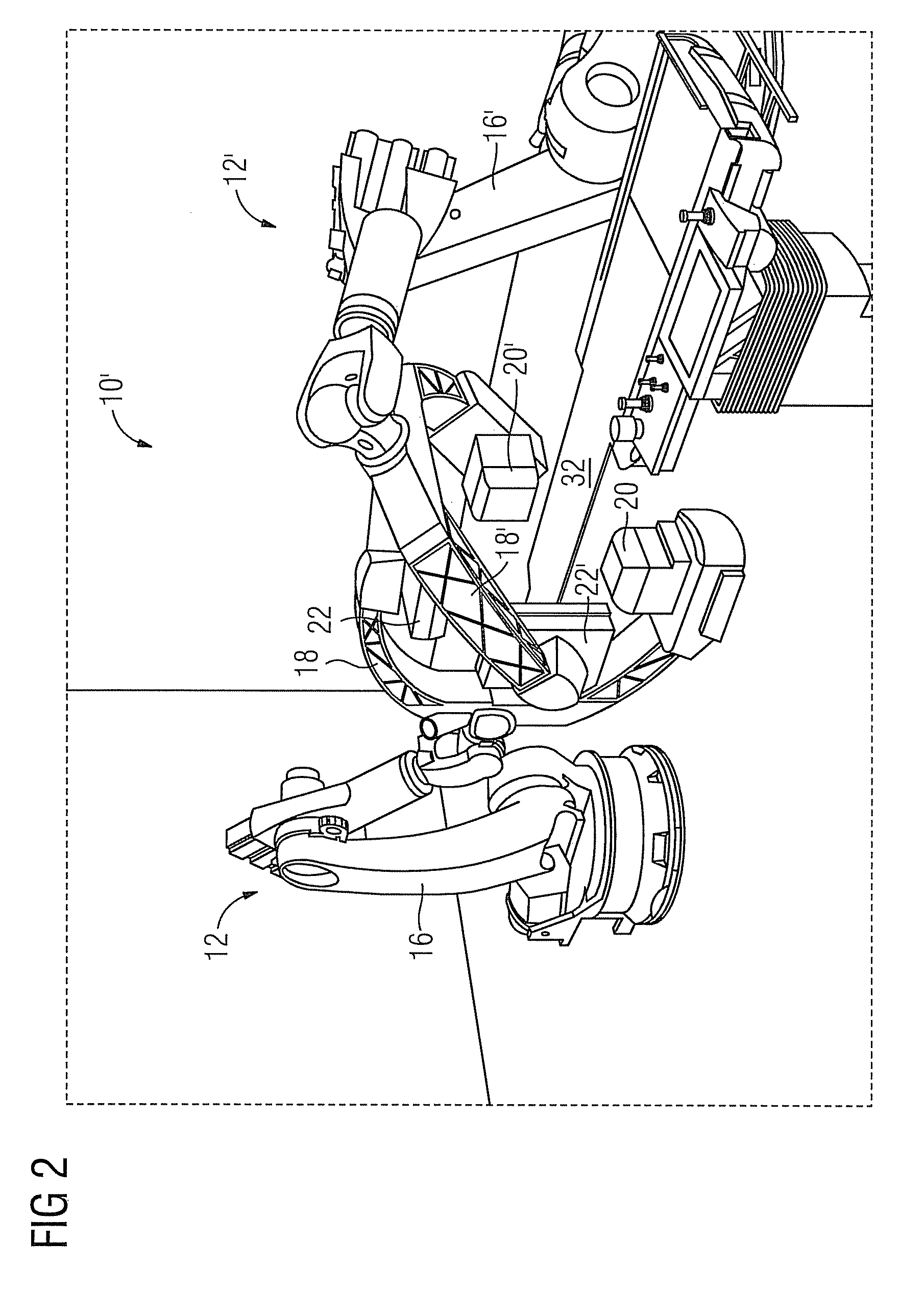Biplane X-ray system
a x-ray system and plane technology, applied in the field of plane x-ray systems, can solve the problems of not being able to change the so-called isocenter of the x-ray c-arm, restricting the movement options, and not being able to record all image combinations
- Summary
- Abstract
- Description
- Claims
- Application Information
AI Technical Summary
Benefits of technology
Problems solved by technology
Method used
Image
Examples
Embodiment Construction
[0024]A biplane X-ray system shown in FIG. 1, designated 10 overall, comprises a first X-ray imaging device 12 and a second X-ray imaging device 14. The first X-ray imaging device 12 comprises a 6-axis buckling arm robot 16, to which is attached a C-arm 18, which bears an X-ray source 20 and an X-ray detector 22. The second X-ray imaging device 14 is a conventional X-ray imaging device comprising a stand 24 which can be moved on rails 23 supporting a movable X-ray C-arm 26 to which an X-ray radiation source 28 and an X-ray detector 30 are also attached. The biplane X-ray system 10 differs from conventional biplane X-ray systems in the use of the robot 16. The robot 16 has many more degrees of freedom than a conventional X-ray C-arm system. This makes certain positions of the X-ray radiation source 20 and X-ray detector 22 possible, in particular also relative to the X-ray radiation source 28 and the X-ray detector 30, therefore, the imaging possibilities of the biplane X-ray system ...
PUM
 Login to View More
Login to View More Abstract
Description
Claims
Application Information
 Login to View More
Login to View More - R&D
- Intellectual Property
- Life Sciences
- Materials
- Tech Scout
- Unparalleled Data Quality
- Higher Quality Content
- 60% Fewer Hallucinations
Browse by: Latest US Patents, China's latest patents, Technical Efficacy Thesaurus, Application Domain, Technology Topic, Popular Technical Reports.
© 2025 PatSnap. All rights reserved.Legal|Privacy policy|Modern Slavery Act Transparency Statement|Sitemap|About US| Contact US: help@patsnap.com



